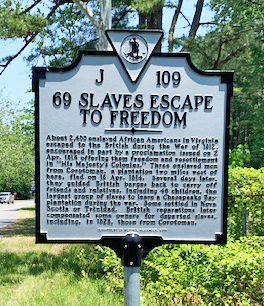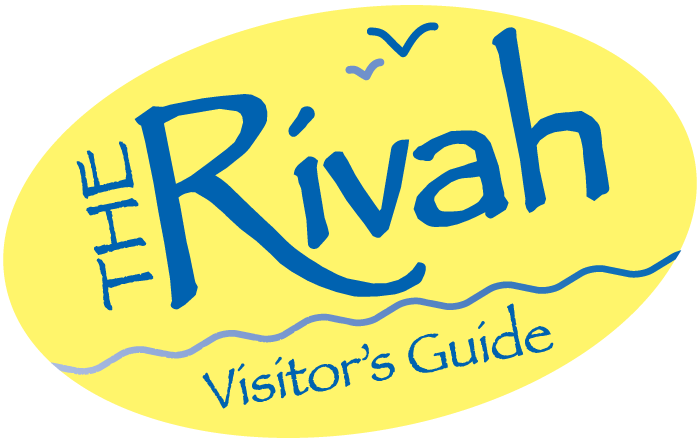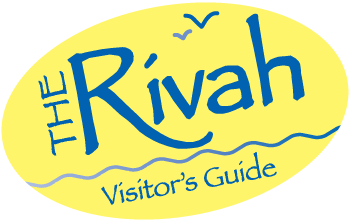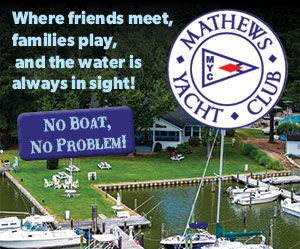
Historical Marker J 109 is near White Stone in Lancaster County. The marker is on Mary Ball Road (Virginia Route 3) north of the Norris Bridge, on the left when traveling east.
The War of 1812, sometimes referred to as the “second war of independence,” was a bitter battle between the British and American militaries that had lasting effects on the Northern Neck, Middle Peninsula and surrounding areas. Over the course of the war, troops began to thin and both sides began to recruit American slaves as an additional source of manpower. At the beginning of the war, U.S. policy prohibited the enlistment of black sailors into the Navy but by 1813, African Americans made up at least fifteen percent of U.S. naval corps.
In 1813 British troops arrived in the Chesapeake Bay where they made headquarters and continually raid Virginia’s costal regions. Out of desperation for freedom, many American slaves along with their entire families risked everything and rowed canoes out to enemy ships is search of refuge in exchange for military service. Orders were given that British commanders were to welcome refugee slaves. Efforts were made by slaveowners to bring back the refugees but delegations were largely unsuccessful. Many slaves chose instead to fight for their own American Navy in hopes of eventually gaining freedom.
In April 1814, British Vice-Admiral Sir Alexander Cochrane gave official orders that all slaves and their families who committed to leaving the U.S. would be welcomed upon British ships with the choice of entering the service or to be sent as free settlers to British territories.
A historical road marker located on the edge of Lancaster County just before the Norris Bridge commemorates the emancipation of 69 slaves from Corotoman Plantation. The placard reads:

About 2,400 enslaved African Americans in Virginia escaped to the British during the War of 1812, encouraged in part by a proclamation issued on 2 Apr. 1814 offering them freedom and resettlement in “His Majesty’s Colonies.” Three enslaved men from Corotoman, a plantation two miles west of here, fled on 18 Apr. 1814. Several days later, they guided British barges back to carry off friends and relatives, including 46 children, the largest group of slaves to leave a Chesapeake Bay plantation during the war. Some settled in Nova Scotia or Trinidad. British reparations later compensated some owners for departed slaves, including, in 1828, those from Corotoman.
Over the course of the war, more than 4,000 people were freed from slavery. This was the largest slave emancipation until the Civil War. At the close of the war, American slaveowners demanded return of their slaves or reparations but most were left empty handed. Many of the the former slaves accepted farmland in Trinidad where their descendants still live in freedom today.
Information sourced from pbs.org





